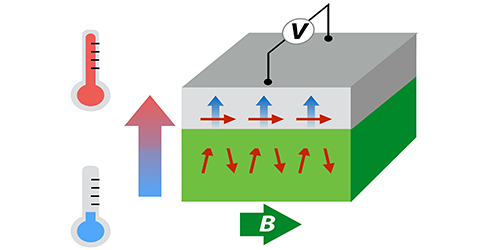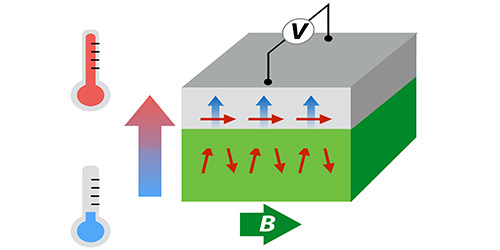Spin Currents in Antiferromagnets
A spin wave is a collective oscillation in the orientation of spins. These waves can carry spin current, as previously shown in ferromagnets, where neighboring spins are aligned with each other. A new experimental study has thermally generated a spin-wave spin current (SWSC) in an antiferromagnetic insulator, where neighboring spins point in opposite directions. This discovery could lead to ultrafast spin-wave communications, since the spin oscillation frequency in antiferromagnets is 100 times larger than that of ferromagnets.
The interest in SWSCs stems from their potential ability to carry information through an insulating wire. As opposed to a spin-polarized current, the electrons in a SWSC remain in place—only their spins tilt as the wave passes by—so there is no energy loss from electrical resistance. SWSCs have been observed in ferro- and ferri-magnetic insulators, but these are a relatively small class of materials. Finding SWSCs in antiferromagnetic insulators—as Shinichiro Seki of the RIKEN Center for Emergent Matter Science in Wako, Japan, and his colleagues have done—opens up a larger field of candidate materials with different properties.
The researchers used chromium oxide ( ) as their antiferrimagnetic insulator and placed a (paramagnetic) platinum layer on top of it. An external magnetic field pointing in the horizontal direction, caused the spins in to precess. The team then applied a thermal gradient, which is known to generate SWSCs in ferromagnets through the so-called spin Seebeck effect. To check for SWSCs in their system, Seki and colleagues placed electrodes on the platinum layer. They recorded a voltage that depended on both the magnetic field and the thermal gradient, which implied a spin-polarized current in the platinum that originated as a SWSC in the antiferromagnetic insulator.
This research is published in Physical Review Letters.
–Michael Schirber





